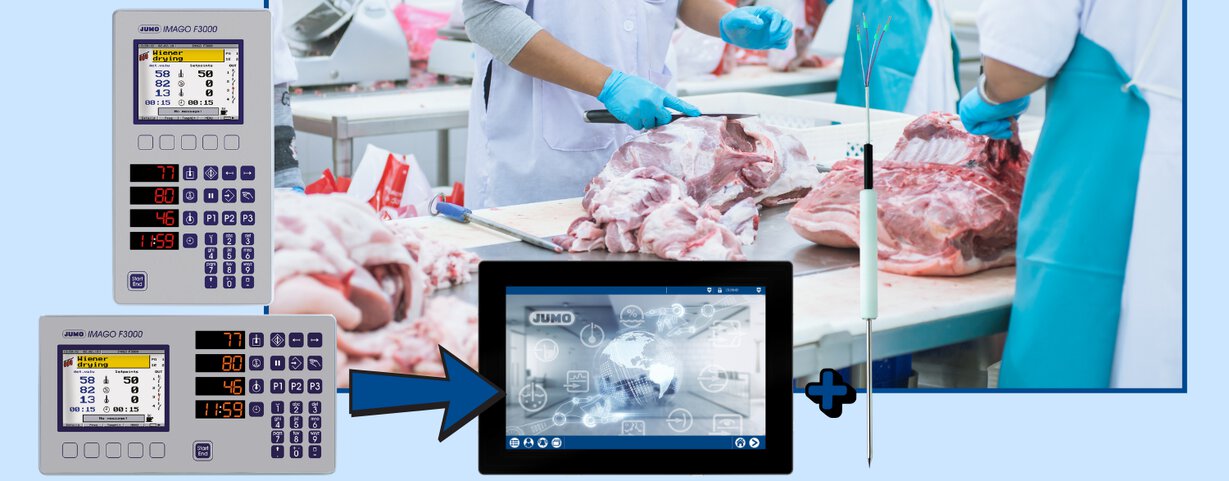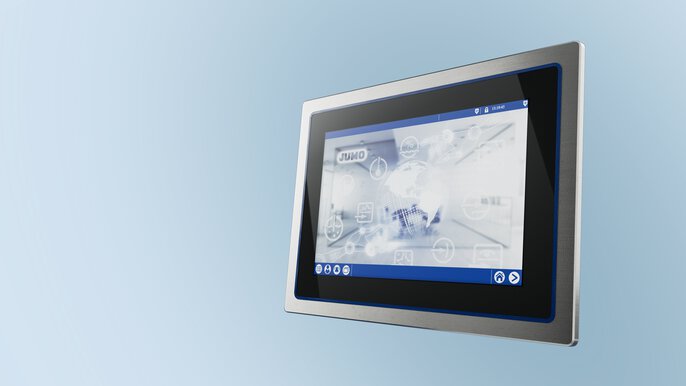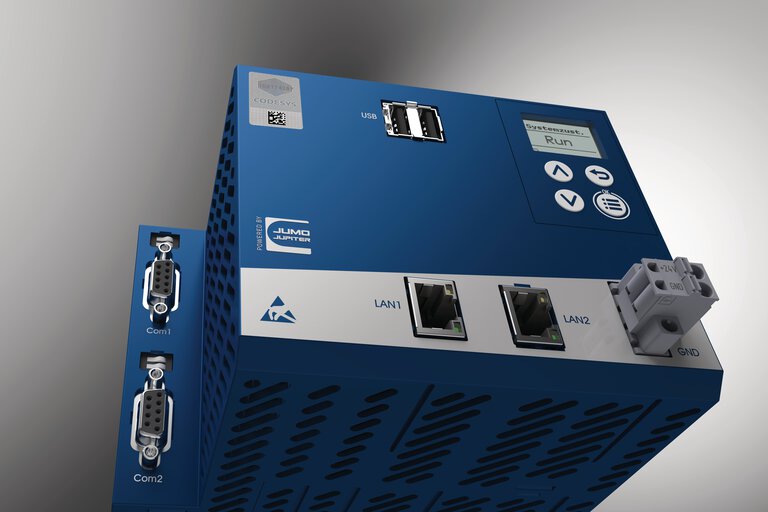

Temperature monitoring and control in the meat industry – case study of PLC implementation
In meat processing, even small fluctuations in temperature can lead to raw material losses, microbiological risks and HACCP problems. Without a modern control system, it is difficult to maintain the stability of processes such as pasteurisation, cooling or storage. In this case study, we will show how a meat and sausage producer faced the challenge of upgrading its temperature control system. You will learn which advanced PLC technologies and temperature sensors were implemented to ensure a smooth migration without downtime, greater precision in measuring temperature values and compliance with sanitary standards. Read on to find out how to successfully modernise temperature control in the meat industry, minimising risk and increasing production efficiency!
How does the automation of temperature control increase the efficiency of food production?
Temperature in food and beverage production has a direct impact on the quality, taste and safety of products. Even small deviations can lead to losses of raw materials, reduced shelf life or the risk of bacterial growth. This is why it is so important to measure the temperature at every stage of production - from heat treatment to storage of raw materials to transport of finished products.
To comply with strict HACCP hygiene standards, factories need to accurately monitor and regulate temperature in key processes such as pasteurisation, sterilisation or refrigeration. Proper temperature control is also crucial in premises where products sensitive to changes in ambient conditions are stored, especially for frozen goods and those requiring refrigeration. The Food Hygiene Regulation requires manufacturers to strictly control the temperature at every stage of the supply chain.
However, measurement alone is not enough - it is also important to be able to react quickly to changes and adjust parameters automatically. This is why many companies are implementing digital thermometers and control systems that allow real-time monitoring of ambient temperature and conditions in cold stores and warehouses. This is particularly important for products that require cool storage temperatures, where even short-term deviations can affect the quality and safety of products.
Increasing market demands are driving companies to invest in state-of-the-art control systems that increase efficiency and eliminate the risk of errors, providing temperature monitoring and full parameter control at every stage of production and storage.
How to avoid downtime when replacing a temperature control system? The customer's problem
The customer, a manufacturer of meat and meat products, had been using the IMAGO F3000 controller for years - a tried and tested and reliable solution that served its purpose perfectly. However, with its withdrawal from the range, there was a need to move to a new system. The key challenge was to find a solution that would ensure a smooth transition without disrupting production. Any downtime would mean losses, so the upgrade had to be quick and seamless.
In addition, the new system had to be fully compatible with existing JUMO sensors. Replacing the entire measurement infrastructure would have entailed enormous costs and an extended implementation process. The customer therefore expected the new solution to allow the continued use of the existing sensors, while at the same time offering state-of-the-art features that would improve control of the production process.
Ease of use was also an important criterion. Employees accustomed to the IMAGO F3000 needed an interface that was intuitive and would allow rapid implementation without the need for lengthy training. The new system was not only to replace the previous solution, but also to provide more extensive control capabilities, better data visualisation and greater flexibility in parameter configuration.
How did hygienic temperature sensors and a PLC help optimise production processes in meat processing? Our solution
To ensure a smooth transition for the customer, a state-of-the-art JUMO variTRON Touch PLC was implemented - an advanced solution with an intuitive touchscreen interface that not only replaced the IMAGO F3000, but also opened up new possibilities for process control. A key element of the implementation was the migration of programmes from the old system, which preserved the existing settings and avoided time-consuming programming from scratch. As a result, the entire modernisation process went smoothly and production was able to run without long downtimes.
In addition, the new system was integrated with the JUMO FOODtemp temperature measuring sensor - a precision device specially designed for the demanding conditions of the food industry. The vapour-tight design of this temperature sensor ensured reliable measurements even in environments with high humidity and fluctuating temperatures. This provided the customer with even more accurate process control and the assurance that it meets stringent quality standards.
The final implemented solution allowed not only a seamless replacement for the IMAGO F3000, but also increased production efficiency and better control over key parameters.

PLC controller variTRON 500 touch (705004)
How have advanced PLC functions improved meat and sausage production? Customer benefits
By implementing the new system, the customer gained a smooth transition to modern control, without the need for lengthy downtime. The migration of programmes from the IMAGO F3000 allowed previous settings to be retained, which meant the plant could continue production without disruption. This is crucial in the food industry, where every hour of downtime can mean large losses.
The state-of-the-art JUMO variTRON Touch controller gave the customer more control over the process. With its intuitive interface and advanced control functions, it is now possible to regulate the temperature more precisely and react more quickly to changes. This translated into increased efficiency and better production optimisation.
In addition, the use of the JUMO FOODtemp sensor has ensured even more accurate temperature measurements of meat and sausages, which is crucial in the food industry. Its resistance to moisture and high temperatures has made the system more reliable and durable, minimising the risk of failure and the need for frequent service interventions.
All in all - the client has not only maintained full operational continuity, but also significantly increased production efficiency and improved measurement accuracy, which ultimately translates into better product quality and greater compliance with standards.
Check out our other solutions for temperature monitoring in the food industry, e.g. wireless temperature sensors, temperature loggers.
About the author
My name is Ewelina Szmit and I have been working in content marketing for several years, combining my professional skills with my passion for writing. I am convinced that even the most technical topics can be presented in an interesting and accessible way for everyone. Outside of work, I unleash my creativity by creating newspaper collages. I like to spend my free time being active, walking my dog or running.

Technical specialist
Jakub Dąbrowski - Inside Sales Engineer +48882351471 Jakub.Dabrowski@JUMO.net +48882351471Comments
We encourage you to leave your comments via the form below. They will be posted online once they have been approved through our review process.


